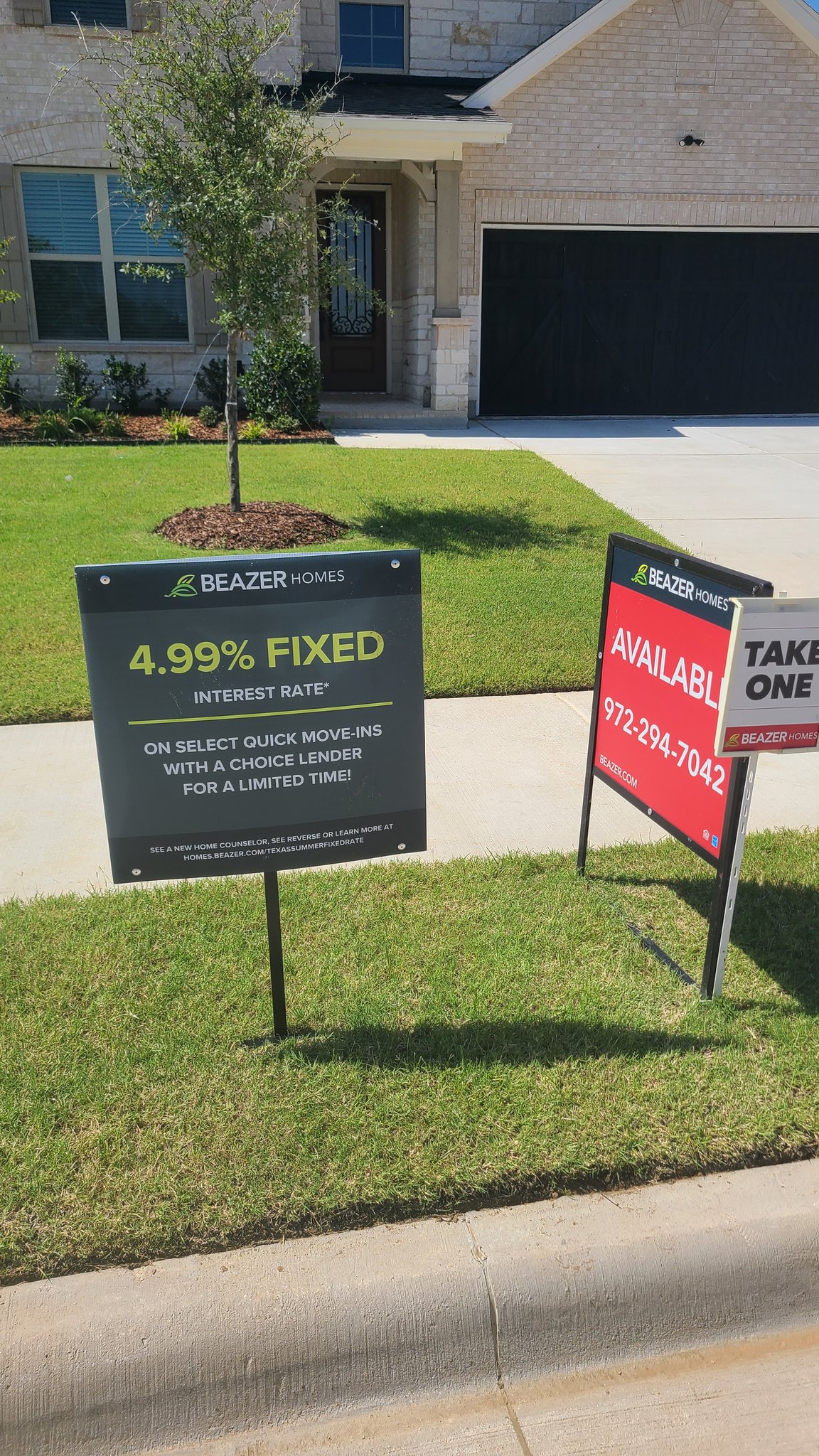We Buy Houses Fast in Dallas-Fort Worth
A comprehensive analysis of the Dallas-Fort Worth real estate market's dramatic shift from seller's to buyer's market, examining new construction oversupply, exurban corrections, and affordability challenges that are reshaping opportunities for buyers, sellers, and investors in 2025.


The signs are everywhere if you know where to look. From the desperate 4.99% fixed-rate incentive signs popping up in new construction neighborhoods to the sobering reality of property tax assessments that have jumped 65% in just three years, Texas homebuilders are facing a perfect storm that's about to force their hand on pricing.
Despite homebuilders already enjoying lower interest rates than the general market, their inventory still isn't moving. As one industry observer recently noted on social media: "Home builders in America already lower interest rates. Their inventory still isn't selling like they hope. There's just too much inventory for sale and it's still priced too high."
The numbers back this up. Inventory of homes for sale in Texas jumped by 27% from June 2024, by 33% from June 2019, and by 41% from June 2018, reaching 138,255 homes. This represents the highest inventory levels in five years, with median time on market now stretching to 54 days.
What makes the Texas situation particularly acute is the property tax crisis that's crushing affordability. A recent analysis of a rental property's tax history reveals the devastating impact: assessed values jumped from $254,000 to $420,000 between 2021 and 2024—a staggering 65% increase with no major improvements.
As real estate professional Dayla Bradford pointed out: "Even if a buyer negotiates on price, these inflated assessments + insurance easily add $1K/month — just like you said. And it hits rentals too, making it impossible for landlords to offer reasonable rates."
This creates a double bind for builders: even with aggressive pricing, the carrying costs make homes unaffordable for many buyers.
The price cut wave isn't coming—it's already here. Recent data shows that 38% of builders cut prices in July 2025, with an average reduction of 5%. In Austin alone, over half of all active new construction listings have implemented price reductions.
The Beazer Homes sign in your photo tells the whole story: desperate incentives like 4.99% fixed rates "for a limited time" on "select quick move-ins" signal builders who need to move inventory fast. When builders start advertising specific interest rates on yard signs, you know they're feeling the pressure.
Unlike individual homeowners who can afford to wait, builders face carrying costs that make holding inventory extremely expensive. Standing inventory is costly to builders, and with construction loans, property taxes, and opportunity costs mounting, they simply cannot afford to play the waiting game.
Industry experts predict this trend will accelerate, with the CEO of Toll Brothers warning of "spec build overhang" in markets including Texas. When an $11 billion builder empire is sounding alarms about oversupply, it's time to pay attention.
Recent forecasts show Rockwall County has already experienced a 6-7% decrease in median home prices, and this trend is expected to spread throughout the broader DFW region in 2025. Despite some analysts predicting home price growth to moderate to about 4% year-over-year, the builder inventory crisis suggests more dramatic corrections are coming.
The most significant price corrections are expected in the exurbs, where excessive new construction has created the perfect storm of oversupply. These areas, characterized by abundant available land and fewer high-paying jobs, are seeing builders struggle with inventory that simply doesn't match buyer demand at current price points.
While central Dallas, Irving, and Garland may see more modest corrections initially, the ripple effects from builder price cuts will eventually impact the broader market as buyers gain more leverage and alternatives.
This shift represents the best buying opportunity in years. Builders are offering unprecedented incentives—from mortgage rate buydowns to significant price reductions—creating opportunities for savvy buyers to secure deals that seemed impossible just months ago.
Real estate investors should pay close attention to builder closeout sales and spec home liquidations. These distressed sales often represent the best value propositions in the market, particularly for those looking to acquire rental properties or fix-and-flip opportunities.
If you purchased during the pandemic peak, particularly in exurban areas, you may be facing negative equity as the market corrects. Understanding your local market dynamics and timing any potential moves becomes crucial.
For homeowners who need to sell quickly—whether due to foreclosure, inherited property, job loss, or other life circumstances—this market shift creates both challenges and opportunities. While traditional retail sales may take longer and yield lower prices, alternative solutions become more attractive.
Cash buyers who understand the market dynamics and can close quickly without financing contingencies are positioned to offer competitive solutions to sellers who prioritize speed and certainty over maximum price. This is particularly relevant for homeowners in Dallas, Garland, and Irving who need to move fast and understand the trade-offs of selling off-market.
Based on current trends and builder inventory levels, we predict:
Q3-Q4 2025: Continued builder price cuts and incentive escalationQ1 2026: Peak correction in exurban marketsQ2-Q3 2026: Correction spreads to core metropolitan areasQ4 2026: Market stabilization begins
This correction will separate the prepared from the unprepared. Whether you're buying, selling, or investing, understanding these market dynamics and positioning yourself accordingly will determine your success in the coming months.
The writing is on the wall—literally, in the form of desperate builder signage offering below-market rates. Texas homebuilders are about to lead the biggest price correction since 2008, and smart market participants are already positioning themselves for what's coming next.
About the Market Analysis: This analysis is based on current market data, industry reports, and observable trends in the Texas real estate market as of August 2025. Market conditions can change rapidly, and individual circumstances may vary.
If you’re ready to sell your DFW home without the headaches of repairs, showings, or fees, Dallas Homes for Cash is here to help.
Get a no-obligation cash offer today and see what your options are before committing to a long listing process.
Call us now at (469) 305-0988 or fill out our quick form — we can evaluate your home today and have your offer ready within 24 hours.